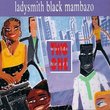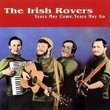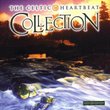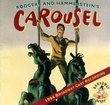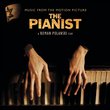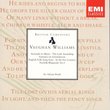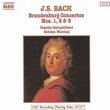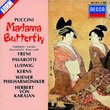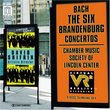| All Artists: Modest Mussorgsky, Vladimir Ashkenazy, Philharmonia Orchestra of London Title: Mussorgsky: Pictures at an Exhibition (Original Piano Version & Orchestral Version: Ashkenazy) Members Wishing: 1 Total Copies: 0 Label: Decca Release Date: 10/25/1990 Genre: Classical Style: Number of Discs: 1 SwapaCD Credits: 1 UPC: 028941438621 |
Search - Modest Mussorgsky, Vladimir Ashkenazy, Philharmonia Orchestra of London :: Mussorgsky: Pictures at an Exhibition (Original Piano Version & Orchestral Version: Ashkenazy)
CD DetailsSimilarly Requested CDs |
CD ReviewsA Capture of the Soul of Moussorgsky Dr. Robert S. Bean | Winter Springs, FL United States | 11/10/2003 (5 out of 5 stars) "After hearing a great many interpretations of this work, as well as performing it myself, I found a 1976 recording on vinyl by Ashkenazy. It was stunning to say the least. However, it seems like greatness often builds on greatness; and this artist is a prime example of that adage. Upon first hearing Ashkenazy's piano interpretation, I brought out my piano score, and listened to a recording by Horowitz, as well as a newly released rendition by Byron Janis. I have read many a review as to Ashkenazy's attempts to stay as close to the score as possible. In this recording, he does almost precisely that. In my Horowitz and Janis recordings, the Promenade between "Goldenberg and Schmuyle" and "The Market Place at Limoges" is just not there. Horowitz also takes liberties where I don't think he should (an upper triplet root/7th/root insertion at the end of "The Great Gate of Kiev", for example.) Ashkenazy's performance is, to use a term not exactly precise, brilliant. Although his rendition of "Bydlo" is taken initially at at least a ff (fortissimo), the Hartman portrait is of a Polish ox cart with massive wheels--the ff rendition portrays the clumsy, massive cart in a way as if one can picture it in the mind's eye! Ashkenazy's control of the keyboard in all the movements is stellar--his rendition of "The Hut of Baba Yaga", in my opinion, cannot be surpassed. His technique of performing parallel octaves (which run rampant through the composition) is, in my opinion, perfection incarnate. One measure a piano jury uses in critiquing a performance is if the piano "sings"--and Ashkenazy certainly makes the piano sing from soprano to basso buffo, to correlate with the human voice. Although his orchestral arrangement (brilliantly performed by the Philharmonia Orchestra) is different than Ravel's, it is lovely and demands a listen. This is a "must have" CD!" A Phenomenal Recording drstrangelove84 | Cleveland, OH United States | 01/01/2001 (5 out of 5 stars) "I had the good fortune to pick this CD (almost) at random at a Borders store. I was looking for a recording of the original piano version - thank God I found this one. Ashkenazy's performance is fiery and emotional, with genius bordering on insanity. Be warned, this is not a sedate recording. His musical brilliance breathes incredible life into Mussorgsky's notes in both the piano and orchestral version.Without doubt, Ashkenazy makes some unexpected and controversial decisions. For example, he takes "The Old Castle" at almost twice the speed of most other recordings. If you can forget for a moment what you've heard before and really LISTEN to the music as he plays it, you'll see that this interpretation is beautiful and sonorous - in my opinion, easily on par with the traditional slower interpretation. Ashkenazy also begins "Bydlo" at a crushing forte rather than the traditional piano. Again, if you can listen with an open mind, you'll see that his interpretation works. In my opinion, his best performance on this CD is the piano version of "Baba Yaga". Ashkenazy absolutely ATTACKS the piano, and yet maintains technical perfection and an impeccable musical feel all the while. His "Great Gate" I'm somewhat less fond of - in contrast to the Ravel's brass, his is a softer, string-based melody. Despite this, the technical playing and musical acumen is always superb. Even though I'm not as fond of the last movement, Ashkenazy's orchestration seems to convey much more color and passion that Ravel's. Both are masterful orchestrations, but Ashkenazy's is bolder and, to some, downright weird. The opening Promenade is somewhat lighter, the solo in Samuel Goldenberg is given to a violin instead of a trumpet player. As a trumpet player myself, I was not overly fond of this, but musically, it works. Ashkenazy's orchestration is a novel approach and a definite jolt, and I urge anyone who enjoys this suite or Russian music in general to buy this recording. For Ravel's orchestration, I reccomend the Chicago Symphony under Fritz Reiner. Again, that is a very fiery recording. Undoubtedly, some will feel that "The Great Gate" especially is TOO bold and brassy - for you, I suggest the Berlin Phil's recording with von Karajan. As to this CD, however, Ashkenazy's performance throughout is stunningly brilliant. This is "Pictures at an Exhibition" played with gall and fire and brilliance and life that I have never heard equalled through the entire suite. Buy it." Great Recording cj the great | Woodinville, WA | 07/09/2001 (5 out of 5 stars) "Pictures at an Exhibition by Modest Mussorgsky has to be one of my favorite Miscellaneous pieces I have. This CD features not only the original piano version, played by the great Vladimir Ashkenazy, but the Orchestral Version of the piece as interperted by Ashkenazy himself. Pictures at an Exhibition was Mussorgsky's claim to fame, as he rose up from little. This pieces soon became popular, and is often recognized for its wonderful promenade, the preface of five of the six movements. The promenade is first played by a lone finger on the piano (or in the orchestral version, a trumpet), which sets a simplistic setting for the rest of the promenade, soon going forth into complicated chords. The movements were concluded by another section, relating exactly to Pictures at an Exhibition in that these sections resembled the place that they were named for (ie The Marketplace). Some are fast tempo'd (like movement I), but others (like movement II), are very slow and relaxed. Each is complicated in its own way, making the recording in whole very memorable. The piece is originally a piano solo, which is in the first half of this CD recording. The many different parts that the soloist plays creates an atmosphere of complexity, making the piece sound as though it were played by a trio of pianists. The whole piece is very memorable, as i could recreate almost each movement in it's entirety right now. The second half of this disc is an orchestral interpertation by the soloist of the piano solo, the wonderful Vladimir Ashkenazy. It is performed by the London Orchestra, which makes it sound wonderful. It is interesting to compare and contrast the overall goodness of both the pieces, as they are so different yet so alike. Overall, this CD definitly deserves a 5 star rating. I give it that because it has kept me interested in Mussorgsky and classical music, as it is very interesting to listen to, and to attempt to play on the piano."
|


 Track Listings (12) - Disc #1
Track Listings (12) - Disc #1